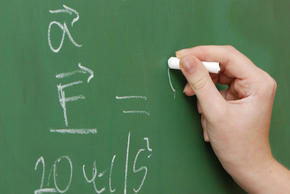Teach Students a Range of Problem-Solving Strategies
Arming students with a multitude of strategies will help them meet their math challenges.
By Donna Iadipaolo

Last semester I took a graduate course class devoted solely to the use of problem solving strategies in the classroom. We focused on the following problem solving strategies outlined by Drexel University’s Math Forum: Guess and Check, Tables and Patterns, Simpler Problem, Change the Representation, Look at Cases, Logical Reasoning, Look Backwards, and Define a Mathematical Model.
To better understand which strategy may be appropriate for a particular problem, it is helpful to look at some of my favorite applications of these problem solving strategies.
A good application of the “Guess and Check” strategy in mathematics is when we are trying to find the square root of a number without using a calculator. For example, let’s say that we want to find the square root of 20. First, we find the whole square roots that are close to 20, namely the square root of 16 (=4) and the square root of 25 (=5). Therefore, we know the square root of 20 to be between 4 and 5. Then it is time to make a guess. We might start with 4.5 because it is exactly in the middle between 4 and 5, so we “check” our “guess” of 4.5 by multiplying 4.5 by itself. We then see if the result is greater or less than 20, and then improve our next guess as a result of that.
Next, look at an example of how “Tables and Patterns” might be utilized. Specifically, when might we ask that a student create a table and examine the patterns within that table? A good example of an application of such a strategy would be when solving some real life systems of equations. Creating a table of say two systems of equations, for instance, would allow the student to generate data based on two equations and then detect the solution of the two equations by seeing when the table has matching numbers.
For the “Simpler Problem” technique we might examine a certain problem, such as the classic handshake problem which asks: How many different handshake combinations are possible in a room with “n” people? In this approach, we might start with 2, then 3 people, and then move higher. We could then figure out a generalized formula based on the pattern detected.
For the “Change the Representation” problem we are in essence asking the student to translate the problem from the various representations in verbal, symbolic, graphic, or tabular form. Such a technique may be useful in the understanding, of the behavior of a function in a general sense, rather than only at a specific moment or ordered pair, simply a single x and y value.
The “Look at Cases” strategy in mathematics in the formal proof arena is also referred to as the “Proof by Exhaustion” technique often used in geometric proofs. For instance, let’s say that we needed to examine the lengths of two segments, say AB versus AC. We would then have to look at the three particular cases that arise: 1.) AB<AC, 2.) AB>AC, and 3.) AB=AC.
Logical Reasoning might be useful when examining a certain word problem in such a manner that we would take the information and categorize it into “Must Be True,” “Can’t Be True,” or “Might Be True” categories. This is also sometimes similarly seen in terms of categorizing in either “Always True,” “Sometimes True,” or “Never True” categories.
The “Look Backwards” activity is now being used more commonly, for instance, when finding the inverse of a function. Specifically, we might first examine what operations are being done to a certain function in order, and then “work backward” to find the inverse of that function. Then suppose we have the function f(x) = 5x+2, using the order of operations we might say that we have a quantity x and 5 is being multiplied to that quantity and then 2 is being added to the quantity. So, for instance, going backwards, we would take the opposite of each operation in reverse. What follows are some lessons where students could apply various problem solving strategies.
Problem Solving Strategy Lesson Plans:
Students are motivated to become involved in mathematical challenges for the pure joy of it. Students utilize problem-solving strategies to analyze and solve the challenges.
Students may think of various problem-solving strategies to analyze the relationship between surface area and volume. Students apply methods of research and experimentation. The problem-solving strategies of creating a table can be more specifically demonstrated by recording data on a spreadsheet.
Circling the Square: Boxing Ring Match
Students determine the best area for a boxing ring using problem-solving strategies. Students determine methods to examine the specifications and construction of modern boxing rings.
Students use problem-solving strategies to determine what dimensions of a box will yield the largest volume. Students also construct a model of the box they will be differentiating.